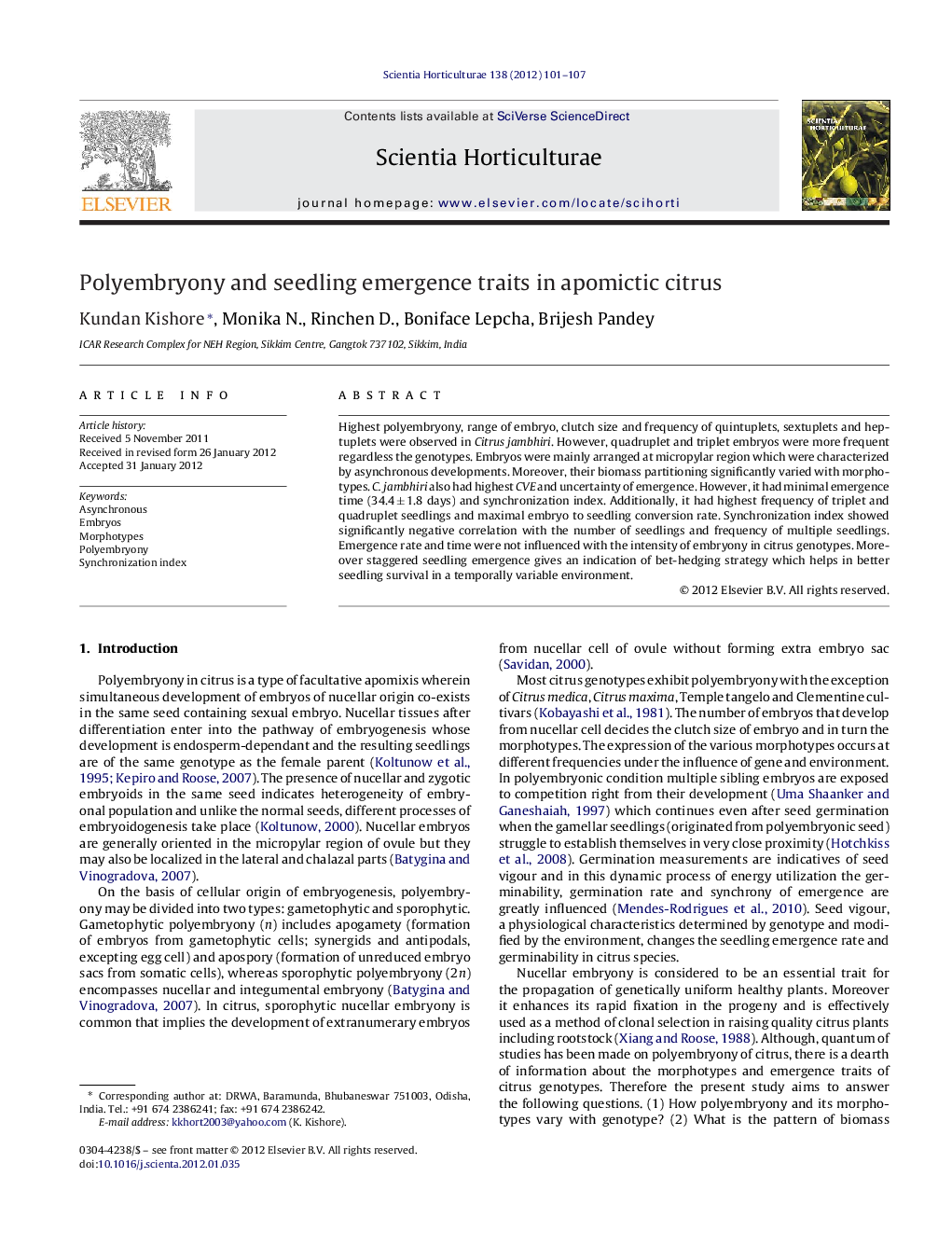| Article ID | Journal | Published Year | Pages | File Type |
|---|---|---|---|---|
| 4567700 | Scientia Horticulturae | 2012 | 7 Pages |
Highest polyembryony, range of embryo, clutch size and frequency of quintuplets, sextuplets and heptuplets were observed in Citrus jambhiri. However, quadruplet and triplet embryos were more frequent regardless the genotypes. Embryos were mainly arranged at micropylar region which were characterized by asynchronous developments. Moreover, their biomass partitioning significantly varied with morphotypes. C. jambhiri also had highest CVE and uncertainty of emergence. However, it had minimal emergence time (34.4 ± 1.8 days) and synchronization index. Additionally, it had highest frequency of triplet and quadruplet seedlings and maximal embryo to seedling conversion rate. Synchronization index showed significantly negative correlation with the number of seedlings and frequency of multiple seedlings. Emergence rate and time were not influenced with the intensity of embryony in citrus genotypes. Moreover staggered seedling emergence gives an indication of bet-hedging strategy which helps in better seedling survival in a temporally variable environment.
► Apomictic citrus showed variation in degree of polyembryony and emergence traits. ► C. jambhiri had highest range of polyembryony and clutch size. ► Minimal emergence time and synchronization index were recorded in C. jambhiri.
